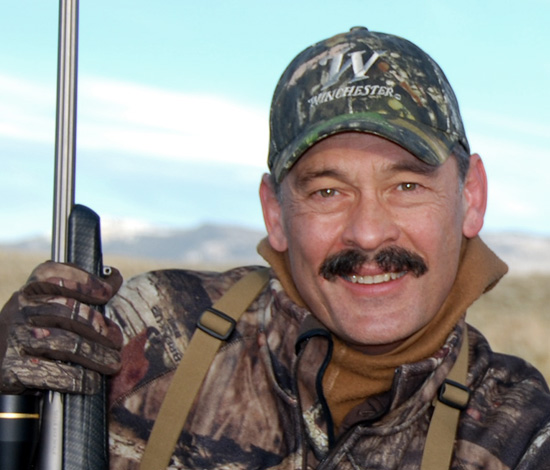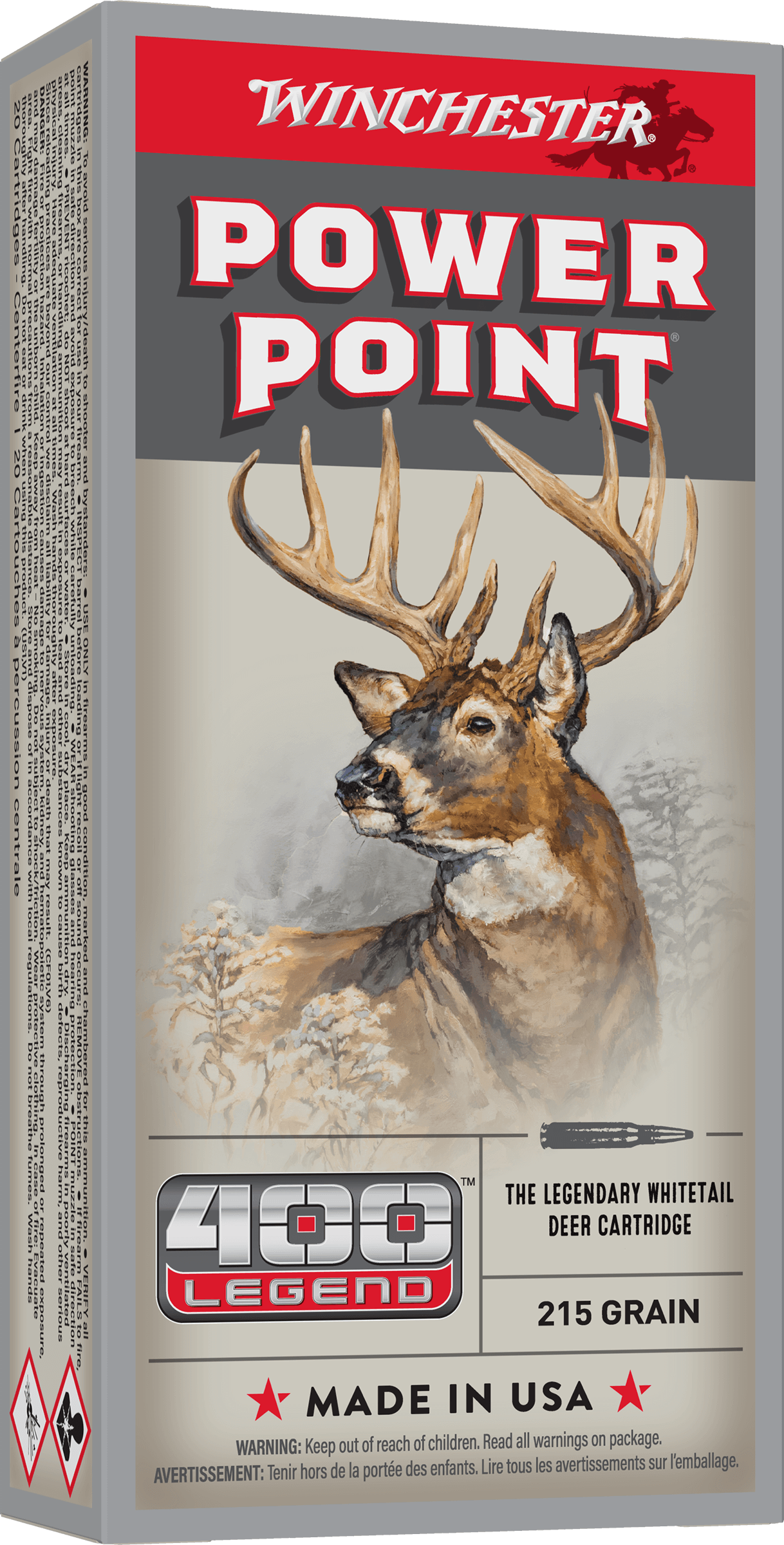Elk Stopping Cartridges
You’ll get arguments aplenty on this topic, but I feel confident declaring NO cartridge or bullet has the knockdown power to anchor any bull elk — unless you strike his central nervous system or get lucky with “hydrostatic shock.”
But that doesn’t mean you shouldn’t use enough gun. The confusing thing about elk is that one bull collapses after a single lung shot from a 243 Win. 95-grain Ballistic Silvertip at 100 yards while the next one takes three 180-grain AccuBond CT slugs through the shoulders inside 50 yards — and keeps walking. Yes, elk are big and notoriously durable, but they’re also known to give up the ghost with what most shooters would deem “minimal persuasion.” Does this mean you should load up your 243 Model 70 or 30-30 M94 for your big bull hunt-of-a-lifetime?
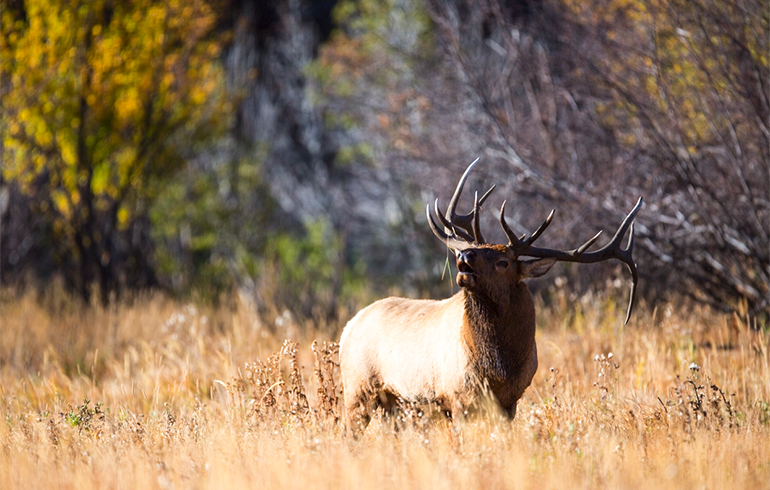
Does this mean you should load up your 243 Model 70 or 30-30 M94 for your big bull hunt-of-a-lifetime?
I wouldn’t recommend it.
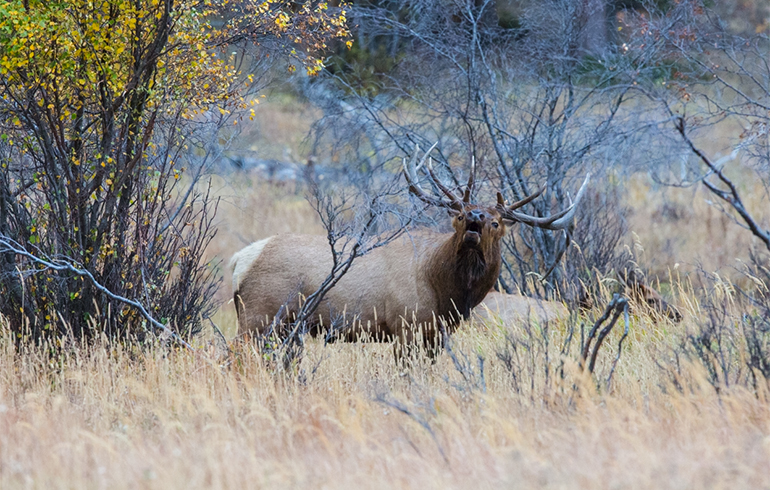
Yes, under ideal conditions you can tip over the biggest bull with the smallest cartridge. But do you really want to risk all your marbles on catching ideal conditions? Most of us find our fleeting shooting opportunities when the wind is howling, the angle is steep, the range is long, there are a few dancing boughs in the way, the bull is half hidden by trees, he’s walking and he’s about to turn and disappear. At times like that we want all the punch we can get.
The 300 Winchester Magnum is revered as an elk round, especially with 180-grain and heavier bullets. Tough ones like Winchester’s Power Max Bonded with jacket and lead core molecularly attached are especially good. Or the AccuBond CT, also bonded but with a sleeker, more efficient shape for extra downrange punch. Even better is the new 190-grain AccuBond LR. This one will start life with about 3,550 f-p energy and conserve it so well that at 500 yards there’s still 2,068 f-p. No elk is going to like that. And these bonded bullets stay together. This helps them maintain momentum. And that means they’ll have the drive to penetrate lots of muddy hair, hide, muscle and bone to reach the vitals — even from less than ideal angles.
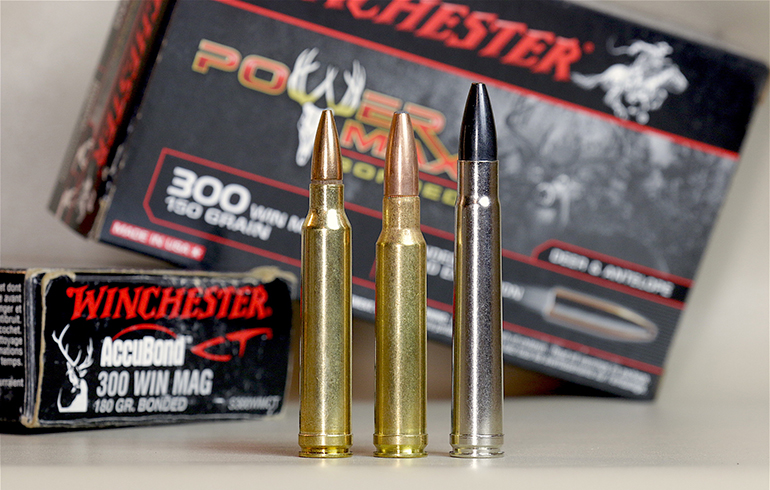
There’s a recoil price to pay with the 300 Win. Mag., however. If you don’t wish to pay it, you have a great option in the 300 WSM, 30-06 Springfield and even the 308 Win. After all, these are also 30-calibers and they shoot many of the same bullets the 300 Win. Mag. does. They just don’t have quite the same flat trajectory nor downrange energy. Nonetheless, with Power Max Bonded, AccuBond CT and LR bullets, they’ll also drive deep. The E-Tip bullet is another great option for deep penetration. It’s all copper with an expanding nose. It’ll maintain nearly 100% of its weight and plow an impressive furrow.
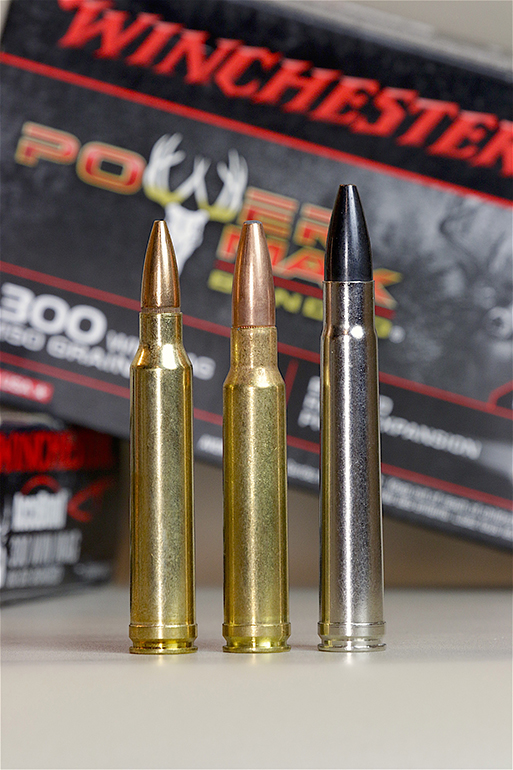
The 270 Winchester, 270 WSM, 7WSM and 7mm Rem. Mag. have been proven in the elk woods from Kentucky to British Columbia. With Winchester’s bonded and E-Tip bullets they’ll do the job, but if you really want to get serious about laying a heavy hit on a bull, you’ve got to try the 338 Winchester Magnum. This, even more than the 300 Win. Mag., is considered the ultimate elk medicine. With roughly the same size case as the 300 Win. Mag., the 338 gains a big beast advantage by handling bullets .338” in diameter and weighing 200- to 225 grains. Winchester’s 225-grain AccuBond CT load growls with 3,918 f-p energy at the muzzle and holds over 3,000 f-p at 200 yards. That’s a heavy, wide bullet with a lot of punch, and elk feel every ounce of it.
This isn’t to say a solid hit with a 338 Win. Mag. is going to throw any bull to the ground immediately. As I said at the start of this piece, no shoulder-fired rifle can be guaranteed to do that. But the one comes closer than most. Unless you want to sample some serious recoil…

Shake hands with the 375 H&H Magnum. Considered the starting point for African buffalo, it may represent overkill for American elk. But some hunters love it, especially in dense cover. A 300-grain Nosler Partition set loose at 2,530 fps is crashing into an elk with more than 4,000 f-p inside of 40 yards. You’ll know it when you touch this one off, but the recoil isn’t really that bad. As they like to say “More of a push than a sharp punch.” I don’t know if that’s legit, but I have noticed that when I shoot at game with a 375 H&H, I don’t feel any recoil. My quarry, on the other hand, seems to.
We can nitpick and get deep into the woods with discussions about the 264 Win. Mag., 458 Win. Mag. and even the old 45-70 Govt. You may go there if you want. But if you just want to cut to the chase and hire the nigh perfect elk gun, fix your gaze on the 338 Winchester Magnum and never look back.
